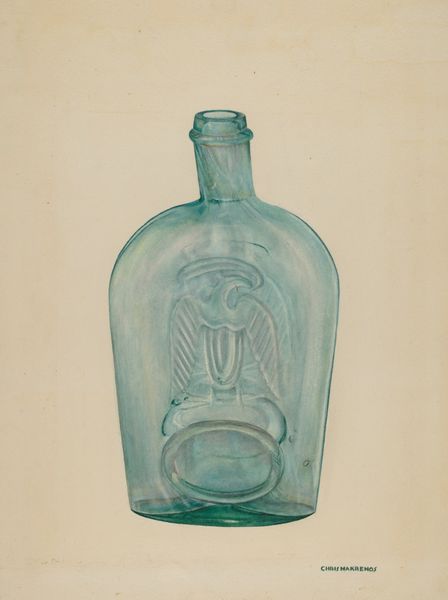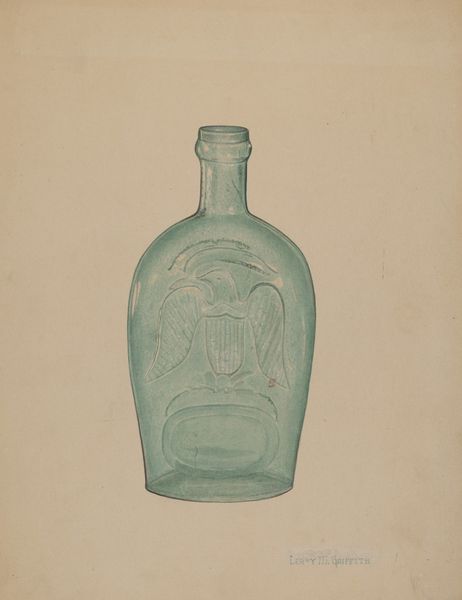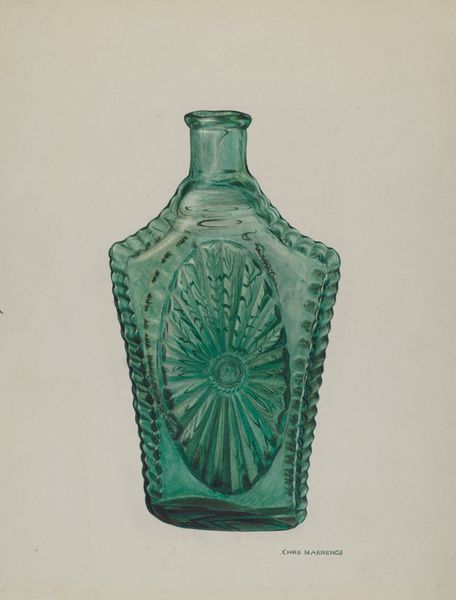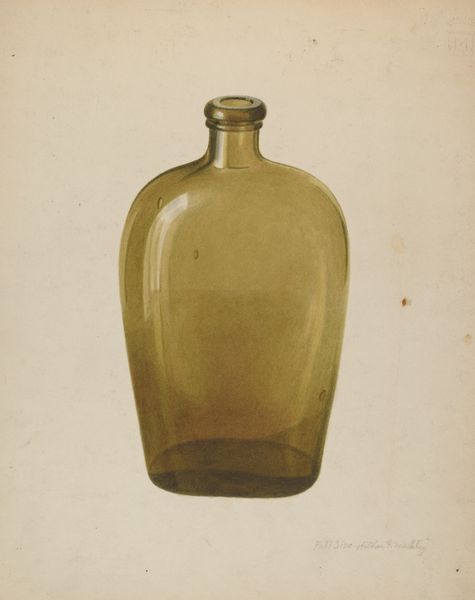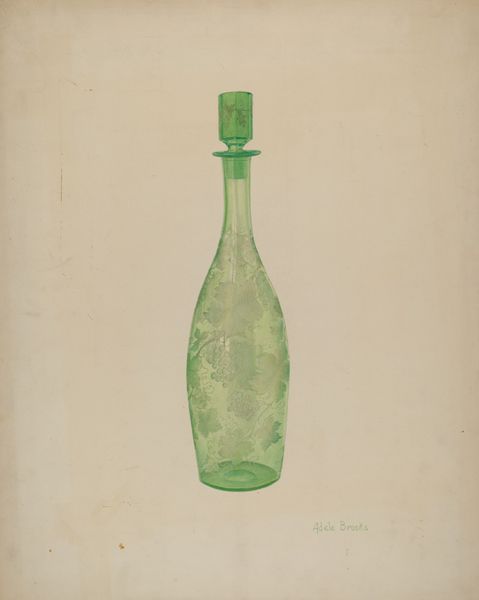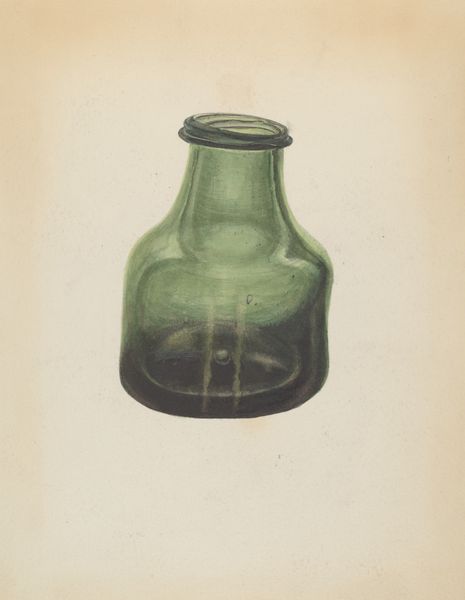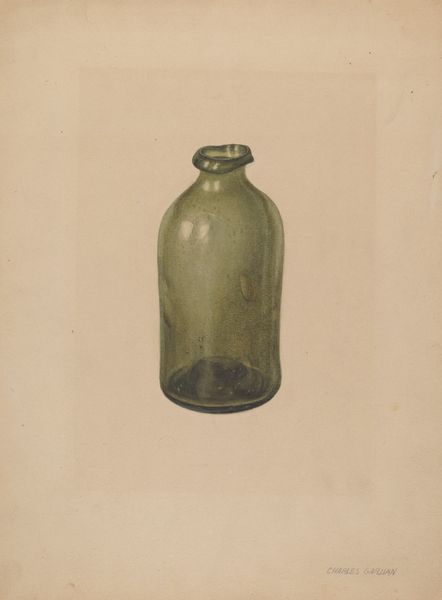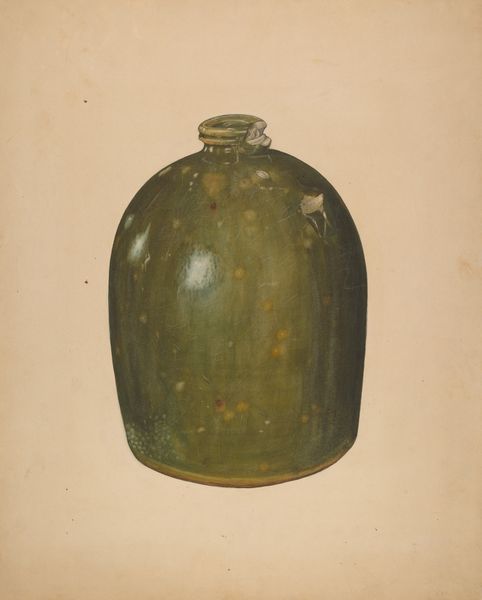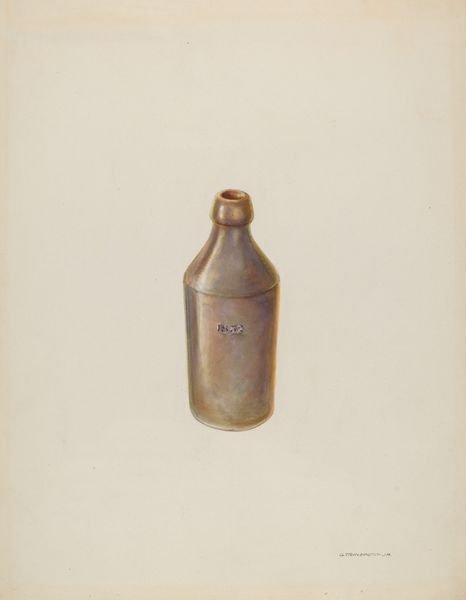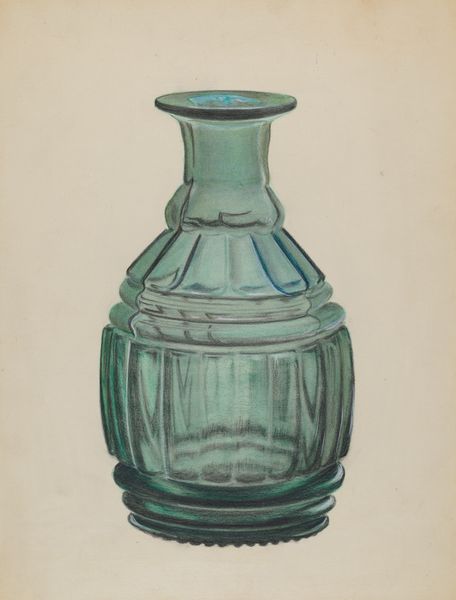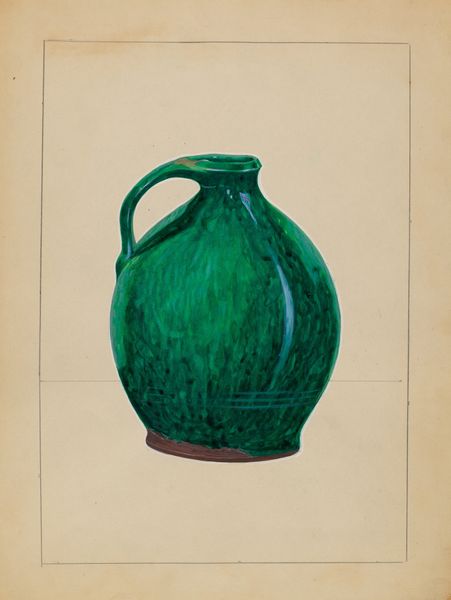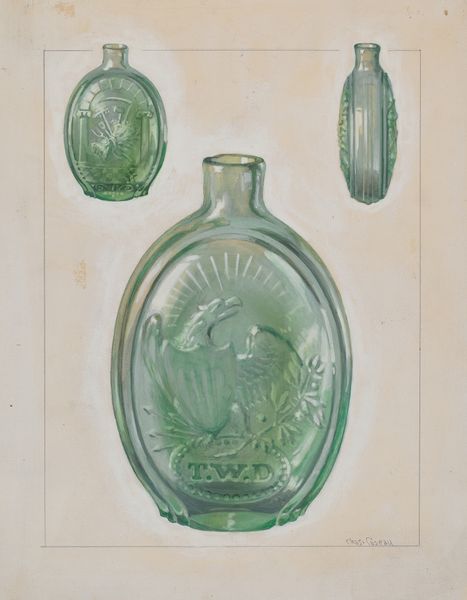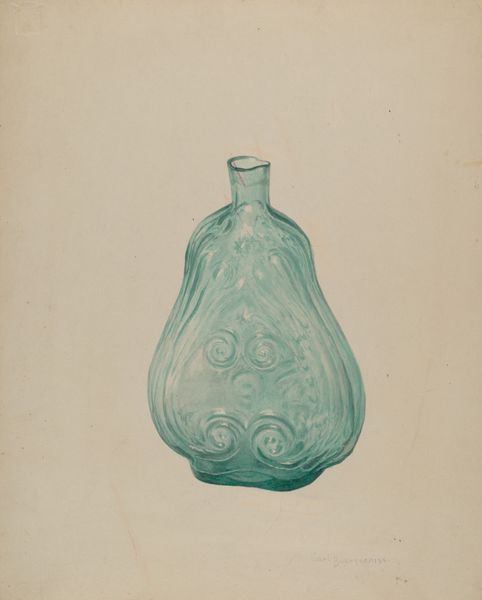
drawing, glass, watercolor
#
drawing
#
water colours
#
glass
#
oil painting
#
watercolor
#
watercolour illustration
#
watercolor
Dimensions: overall: 35.5 x 22.8 cm (14 x 9 in.)
Copyright: National Gallery of Art: CC0 1.0
Curator: What a simple, unassuming form rendered in watercolor. The way the artist has manipulated the pigment to create transparency is striking. Editor: This watercolor work, dating back to approximately 1939, is by Maud M. Holme, and titled 'Glass Bottle'. It immediately strikes me with a nostalgic air, reminiscent of vintage packaging and maybe small-town industry. Curator: Precisely. The subject itself—a common glass bottle from "Willington Glass Co."—highlights the everyday objects elevated through the artistic process. The means of production are evident in the bold simplicity. What would this bottle have been used for? Whose hands held this? Editor: Focusing on the formalism, the use of greens, applied with subtle shading, creates a stunning study of light and form. Note the absence of hard outlines and edges; that enhances the roundness and volume of the bottle, drawing our eye along its curves. Curator: That careful rendition speaks to me about craft. It invites a contemplation of glassmaking as a labor, transforming silica into a functional, perhaps even precious container. The history of industry in Willington, Connecticut, deserves consideration. Editor: The slightly off-center rendering—what's the intent? It breaks the rigid symmetry we might expect, hinting at imperfection and perhaps a human presence, subtly mirroring its mass-produced nature with artistic expression. It creates an organic and captivating composition. Curator: It's a beautiful meditation on value, in the sense of art, material culture, and the act of representing commercial glass manufacturing in early twentieth-century America. This image transforms a functional vessel into an emblem of industry. I think the decision to use watercolors softens what would otherwise be just product image. Editor: For me, it underscores the profound impact the artist has—the artist's perception of a mass produced object with artistic ability, thus creating the unique artwork we observe today. Curator: I see it more as drawing attention to that factory system that could otherwise disappear behind commodity consumption. Editor: Whatever our interpretation, it speaks volumes about how one object can be both ubiquitous and utterly singular through observation and depiction.
Comments
No comments
Be the first to comment and join the conversation on the ultimate creative platform.
